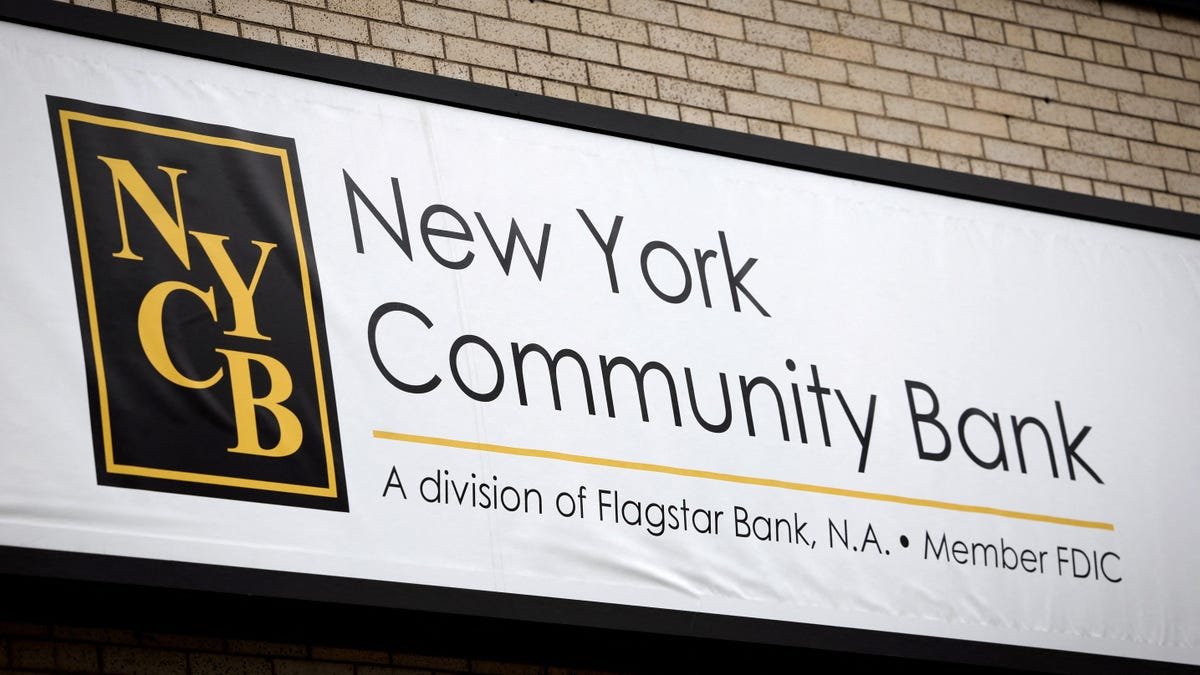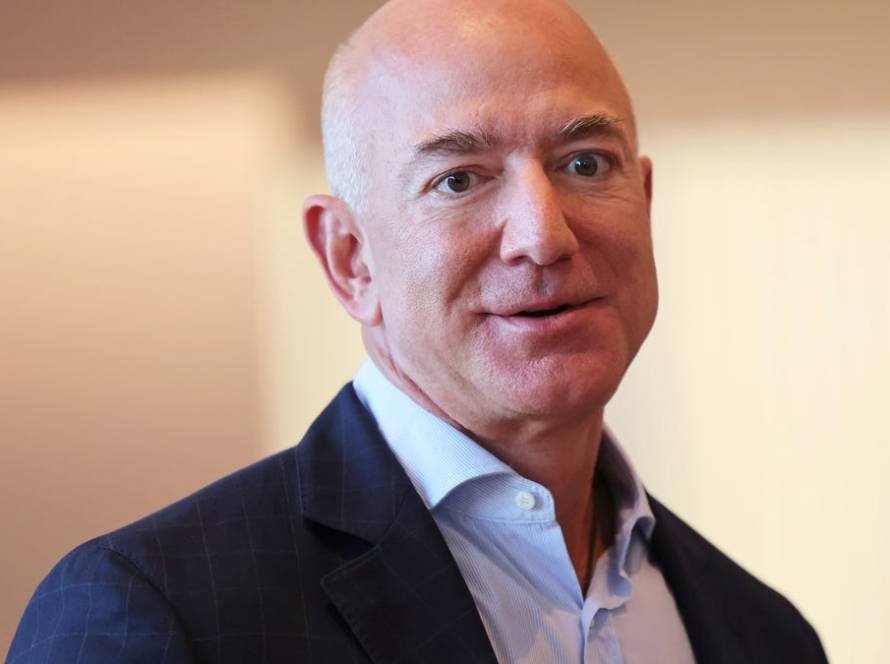[ad_1]
We might have a turducken of bank failure on our hands if an extraordinary rescue effort from Donald Trump’s Treasury Secretary doesn’t hold. New York Community Bank (NYCB) might have gotten a brief respite after a $1 billion rescue plan from new board director Steve Mnuchin, but lots of questions are still swirling around it.
What is New York Community Bank and why does it matter?
New York Community Bank, as of December 31, is the 28th largest bank in the U.S., with $116 billion in assets. That ranking may have slipped, though: The bank told investors today that its deposits have dwindled to $77 billion from the $81 billion it had a month ago. (A bank’s assets might also include the loans on its books and financial investments in addition to deposits on hand; this was a major part of why the financial crisis developed the way it did, despite how much banks have whined about efforts to make the financial system sturdier.)
NYCB’s main business is in real estate lending. In its 2022 annual report, the company touted its footholds in rent-regulated multi-family housing (apartment buildings where local law spells how much landlords can raise their tenants’ rents), mortgages, and warehouses. If NYCB’s name sounds familiar, that’s because its Flagstar Bank subsidiary rescued the juicy bits of Signature Bank, once another mainstay in New York real estate, about this time last year. NYCB had just purchased Flagstar a few months prior.
The New York community referred to in the bank’s name is suburban Long Island, by the way. The bank is headquartered in Hicksville, New York, in Nassau County, about a 20 minutes’ drive over the border from Queens.
How big a deal are NYCB’s troubles, and what would happen if it failed?
NYCB is in trouble because of a couple of factors that have been roiling America’s smaller banks: High interest rates and low commercial real estate values. Higher rates mean that the value of bonds and other typical bank investments is lower because investors will sell them to buy debt instruments with higher interest rates. That leaves banks a little poorer and less able to withstand economic difficulties. And because the return-to-office debate is still going strong, the office buildings and such that lots of local banks fund as their bread-and-butter are worth less. That also leaves banks a little poorer, because that hurts the value of the loans on their books.
How much you should be worried about NYCB depends on a few questions: Do you have a bank account there with less than $250,000 in it? You’ll be fine if things go sideways, thanks to the Federal Deposit Insurance Corporation (FDIC).
Are you a New York-area real estate investor looking to raise money to buy your next apartment building? You might have a little more trouble getting that loan if NYCB isn’t around, and it’ll probably be more expensive. Pour one out for your long-suffering tenants, who might have to eat some of those costs for you.
If you own stock in NYCB, you can’t be feeling great. The company’s shares are down 64% so far this year. And if the bank were to fail, that number would probably get much closer to 100. When Swiss bank Credit Suisse failed last year, state-owned Saudi National Bank lost 80% of its (unfortunately recent) investment when UBS came to the rescue.
If you’re, say, Federal Reserve Chairman Jay Powell, you’re probably feeling more than a little nervous. After Silicon Valley Bank and Signature Bank failed last year, he had to reassure the world that everything was going to be OK. “The bank runs and failures in 2023, however, were painful reminders that we cannot predict all of the stresses that will inevitably come with time and chance,” he said at in a June 2023 speech, emphasizing that “the system was able to withstand recent shocks because of the efforts by regulators and legislators, including our international counterparts in the globally interconnected financial system.” Having to do that again would be 1) annoying and 2) detrimental to public trust.
According to minutes from the Fed’s January interest rate meeting, though, there was still a bit of grumbling about “potential risks for some banks associated with increased funding costs, significant reliance on uninsured deposits, unrealized losses on assets resulting from the rise in longer-term interest rates, or high [commercial real estate] exposures.”
On a February call with investors, NYCB chairman Alessandro DiNello said that the bank “is laser-focused on reducing our CRE concentration as quickly as we can.”
Why is former Donald Trump adviser Steve Mnuchin involved in this?
Before Mnuchin was the Trump-era Treasury Secretary, he was a movie producer. But before that he was a financier who helped out with another bank rescue, saving California lender IndyMac when it failed during the 2008 financial crisis. His consortium of investors later sold the bank for a nifty profit of more than $1 billion. A lot of people were upset with what that bank did under the tenure of Mnuchin’s investment group, including its contributions to the so-called “robo-signing” practice that exacerbated the post-2008 foreclosure crisis. But the bank survived long enough to get bought by CIT Group in 2014. And who bought CIT Group in 2020? Raleigh-based First Citizens Bank, which, in the small world of big banks, acquired the husk of Silicon Valley Bank, 2023’s other headline-grabbing U.S. bank failure.
[ad_2]
Source link




